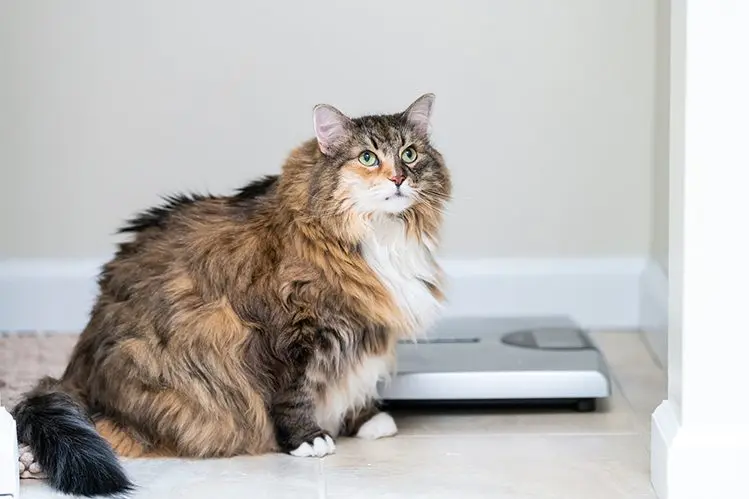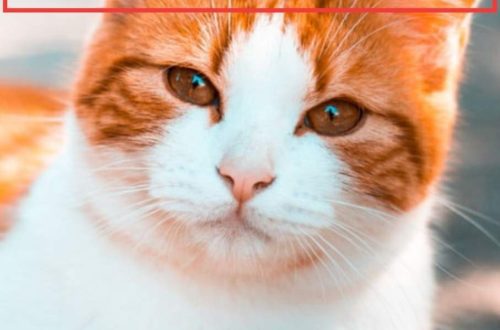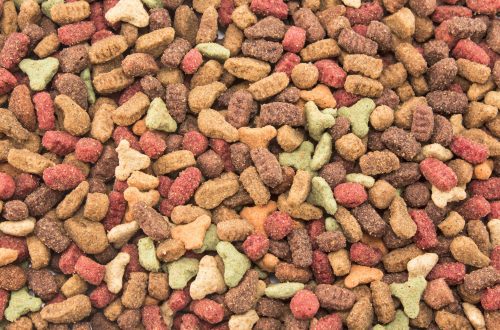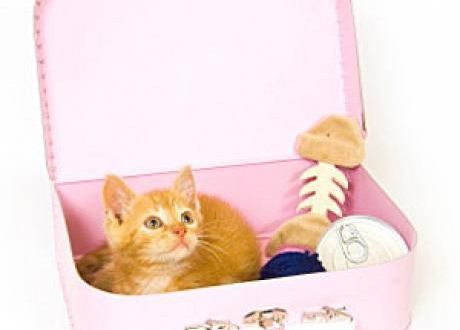
The cat is getting fat: why is this happening and what to do?
Photos of beautiful, moderately well-fed cats and cats in full bloom evoke only positive emotions. But for each breed of pets, there is a weight standard, exceeding which will make a mustachioed-striped not chubby handsome, but an obese pet in need of medical care.
Let’s talk about where for cats there is a line between a couple of extra kilos and obesity. Why is excess weight dangerous for your ward and how not to miss the moment when it’s time for the cat to take up the figure. We will also tell you how to help your four-legged friend return to good physical shape.
The norm of a pet’s body weight depends on the breed, sex, age, nutrition, living conditions, heredity, as well as changes after castration or sterilization.
A healthy and fit, uncastrated British cat weighs between five and eight kilograms, but neutered cats can weigh up to 10 or even 12 kilograms. Kittens are more miniature: the normal body weight for them fluctuates around three to four kilograms. But a spayed cat can weigh up to seven kilograms.

Feel your pet’s ribs. With normal body weight, the subcutaneous fat layer is thin, the ribs are easily palpable. Watch how your ward breathes when she lies on her side. When the cat has no weight problems, in this pose every inhalation and exhalation is noticeable, the side rises and falls.
No one knows your pet better than you yourself. Obesity in cats does not appear out of the blue, the situation develops gradually. Therefore, if you notice a rounded silhouette, excessive appetite, and the scales hint at overweight in a cat, it’s time to take action.
The signs of obesity in cats include excessively large body contours, the absence of clear boundaries of the ribs and abdomen. To this is added a waddling gait, like that of a duck. This gait can only occur in a pregnant or obese cat. Shortness of breath is already evidence that, against the background of obesity, problems with the cardiovascular system begin.
Overweight and obesity in cats increase the risk of diabetes, kidney stones and other serious problems.
Why can a cat become overweight? Here are a few possible reasons.
- Spaying or neutering.
Often, after sterilization or castration, the pet is fond of food. Therefore, after the procedure, the ward, under the guidance of a veterinarian, is transferred to a special food for sterilized and castrated pets.
- Change of season.
In the cold season, the pet no longer runs and walks as much as in summer, but eats the same amount. Unused energy turns into excess weight.
- Stress.
A cat or a cat can “seize” the stress associated with moving, trips to the veterinary clinic and other disturbing factors, and gain weight because of this.
Maybe there is a new pet in the house? The mustachioed-striped worries that the kitten will encroach on his food, so he tries to eat more. A zoopsychologist can help here. Pets need to be reconciled. You can try feeding them in different rooms.
- Diet changes.
For example, adding wet food to the usual dry food, switching to natural feeding and other innovations in the diet. All this always provokes a change in appetite.
- Diseases.
It is possible that the pet leans on food against the background of a disease of the gastrointestinal tract, digestive organs. Maybe a disorder in some other organ system causes the pet to eat non-stop. Sometimes it happens that due to a head injury or damage to the nervous system, the pet does not feel and does not understand that it has already eaten.
We emphasize that a pet with excess weight or obesity must first of all be shown to a veterinarian. You need to make sure that excess body weight is not caused by any disease. The fight for the harmony and grace of a cat must certainly begin in the office of a veterinarian, also because it is necessary to determine whether excess weight has caused health problems.

The veterinarian will select a balanced correct diet for the cat, taking into account its needs and health characteristics. Transfer your ward to a new food gradually, mixing the usual food and a therapeutic diet in a bowl for 10 days.
There are times when cats are wary of medicated food, but then they get used to it. And it also happens that the food still has to be changed, but the choice of the line should be under the supervision of a veterinarian.
Make sure your cat is drinking enough water.
Even a losing weight pet needs to eat every day. However, gradually reduce the daily portion of food and bring it up to the daily allowance specifically for your pet.
When feeding, keep in mind that the table for calculating portions of food on the package is a rather conditional guideline. It is necessary to take into account the level of activity of the pet, its age, dimensions. Discuss the feeding rate with your veterinarian.
Many cat owners prefer to feed their baleen cats twice a day. A healthy cat without problems with the gastrointestinal tract normally tolerates such a meal schedule. But veterinarians note that feeding five to six small meals a day is more appropriate for cats.
If you are at home all day, then nothing will stop you from feeding your ward five or six times a day. A cat that is not prone to overeating can be fed in the morning for the whole day. The pet itself will understand when it is better for her to eat a little. But if your cat has an excessive appetite and you’re out all day, an automatic feeder might be the solution. The compartment with food in it opens at a certain time.
In nature, cats are clever predators that track down prey, lie in wait for a potential victim, and hunt. It depends on the speed of reaction whether the hunt will be successful. For well-being, domestic cats also need to satisfy their instincts, the need to hunt. And what good is it that a cat or a cat eats and sleeps all day long? If you have two cats or cats, they usually play together, so they are less likely to become couch potatoes. But if there is only one pet, then you will get the role of a personal fitness trainer.
Outdoor games are necessary for all cats to maintain physical fitness and develop intelligence. Provide your pet with moderate but regular physical activity for at least 30-45 minutes a day. The easiest way to do this is through toys and games.
When it comes to cats and overweight cats, a treat puzzle is a good choice. These toys help your pet move more and eat less. The snack stretches for a long time, because the puzzle needs to be rolled, literally fighting for every piece of treat. The cat develops ingenuity and feels like a real earner.
All cats love feathered teasers. A fun outdoor game will not only make your cat or cat more active, but will also bring you closer. And you can also use a laser pointer: in a fun pursuit of the “red dot”, extra grams will burn out very quickly.
If possible, install several tall scratching posts at home, and even better – a cat city with tunnels and manholes at various levels. It is unlikely that your cat will want to while away the time on the couch when there is such a jungle nearby!
The secret of health and a good figure for cats and cats is simple: the right diet, sufficient physical activity, regular check-ups at the veterinarian, love and care of the owners. We wish your pets the best!





